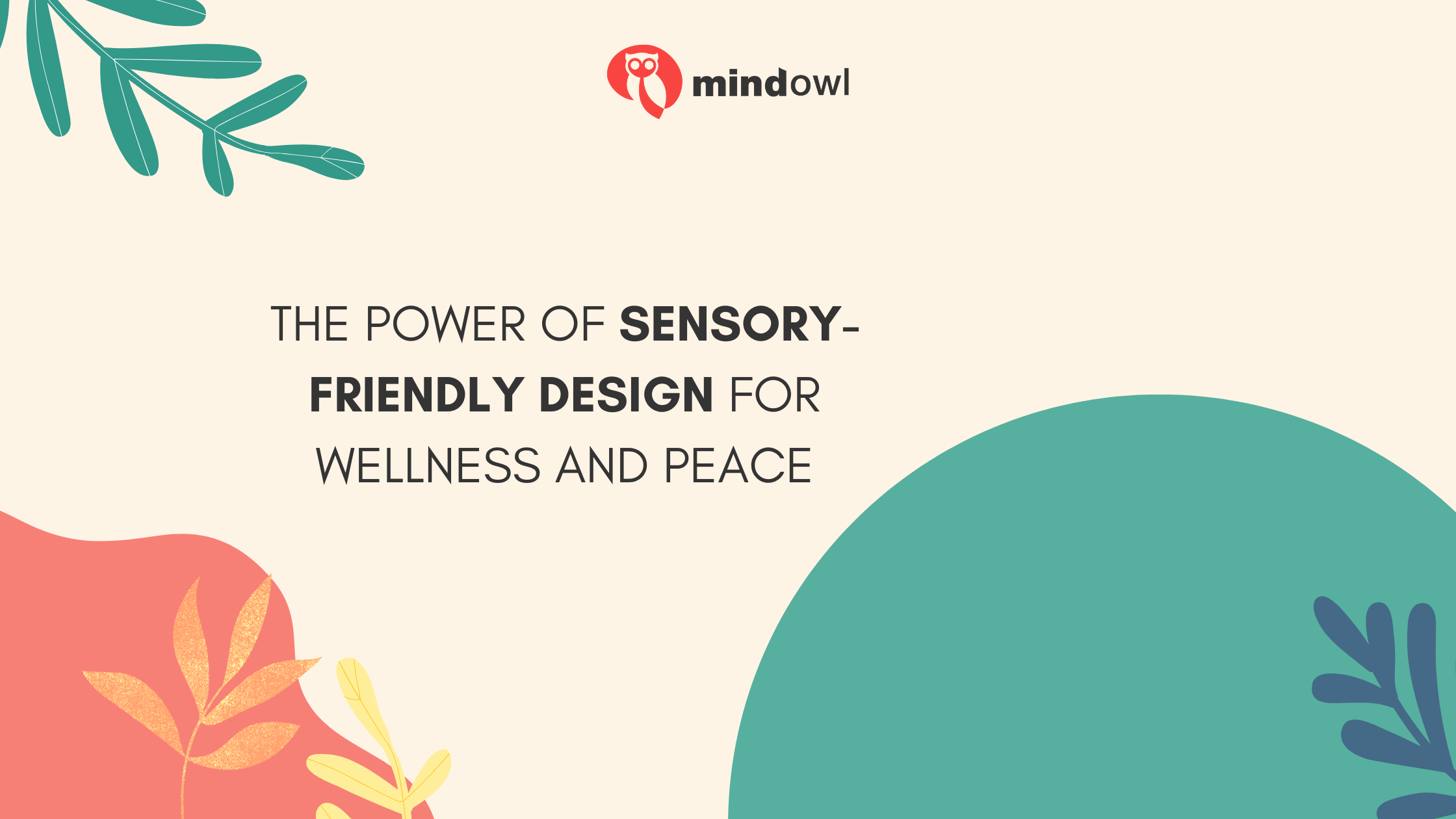In an increasingly fast-paced and overstimulating world, finding a moment of peace can feel like a luxury. Our homes and environments significantly impact our mental health, yet traditional design approaches often overlook the importance of sensory experiences.
Sensory-friendly design is an emerging trend that bridges this gap. Focusing on creating spaces that promote calmness, reduce stress, and improve overall well-being. But what exactly is sensory-friendly design, and why does it matter?
What is Sensory-Friendly Design?
Sensory-friendly design tailors spaces to minimise overwhelming stimuli. Creating an environment that feels soothing and supportive. It’s often associated with designing for individuals with sensory sensitivities, such as those with autism or ADHD. However, it’s principles apply universally. Regardless of someone’s neurodivergence.
Think of sensory-friendly design as the art of balancing elements – light, sound, texture, and layout – to nurture peace of mind. It’s about ensuring that environments are functional as well as emotionally restorative.

The Benefits of Sensory-Friendly Design for Mental Health
Reduced Stress and Anxiety: Overstimulating environments can trigger stress and anxiety. Incorporating dimmable lighting, soundproofing, and organised layouts can help create spaces that feel like a sanctuary, where the nervous system can relax.
Enhanced Focus and Productivity: Sensory overload can hinder concentration, making it difficult to focus or complete tasks. A dedicated, quiet workspace with minimal distractions can enhance mental clarity. Think neutral colours, ergonomic furniture, and strategic lighting to reduce visual noise; keeping the mind sharp.
Improved Emotional Regulation: Our surroundings influence how we feel. Chaotic spaces can evoke feelings of frustration or unease, while calm, orderly spaces encourage emotional balance. Incorporating biophilic elements – plants, natural light, or water features – as well as natural materials can create an emotional refuge.
Better Sleep Quality: Sleep is the cornerstone of mental health. Designing bedrooms with muted tones, blackout curtains, and minimal electronic interference can support deeper, uninterrupted sleep. Adding sensory-friendly touches like weighted blankets can make bedtime all the more inviting too.
Inclusivity and Accessibility: One of the most beautiful aspects of sensory-friendly design is its inclusivity. It creates spaces that cater to diverse needs, ensuring everyone feels comfortable. Whether it’s a child with sensory processing challenges, a neurodivergent adult, or someone simply seeking calm, sensory-friendly environments foster a sense of belonging.
How to Incorporate Sensory-Friendly Designs at Home
Simplify the Space: Start by decluttering. A clean, organised space instantly feels calmer. Use smart storage solutions to reduce visual clutter and create a sense of openness.
Focus on Lighting: Choose soft, adjustable lighting that allows you to tailor brightness throughout the day. Natural light is ideal, so maximise windows and use sheer curtains to let in sunshine without overwhelming glare.
Choose Calming Colours: Earthy tones, soft blues, and neutral palettes work wonders for creating a serene atmosphere. Avoid overly bright or busy patterns that can overstimulate the senses.
Add Textural Variety: Incorporate cosy textiles like plush rugs laid over engineered floors or knitted throws across sofas with velvet cushions. Texture adds depth without overwhelming the senses; allowing you to create an inviting environment.
Integrate Natural Elements: Bringing nature indoors instantly adds tranquillity to a home. Think of how houseplants, wooden flooring and furniture, or even a small indoor fountain can make a space feel alive and calming.
Control Noise Levels: You can use rugs, curtains, and furniture to absorb sound and reduce echo. For noisier environments, invest in noise-cancelling devices or acoustic panels to keep the space quiet and soothing.
Why Sensory-Friendly Design is the Future
As awareness of mental health grows, sensory-friendly design is becoming more than a trend. It’s a necessity. Modern life bombards us with stimuli, and the environments we inhabit should counteract that. Offering a retreat where we can recharge.
For homeowners, incorporating sensory-friendly principles isn’t ju7st about improving aesthetics. It’s about fostering a better quality of life. For businesses, creating a sensory-friendly space can boost employee well-being; leading to higher productivity and satisfaction.
Designing for Peace
Sensory-friendly design offers a profound reminder: the spaces we create reflect the care we show ourselves and others. By designing environments that nurture mental health, we’re not just building better homes or workplaces. We’re cultivating a world where peace and wellness thrive
Whether you’re revamping your living room, designing a quiet workspace, or reimagining a community centre, the principles of this design offer something valuable for everyone. After all, in a world filled with noise, who wouldn’t want a little more calm?
MindOwl Founder – My own struggles in life have led me to this path of understanding the human condition. I graduated with a bachelor’s degree in philosophy before completing a master’s degree in psychology at Regent’s University London. I then completed a postgraduate diploma in philosophical counselling before being trained in ACT (Acceptance and commitment therapy).
I’ve spent the last eight years studying the encounter of meditative practices with modern psychology.

